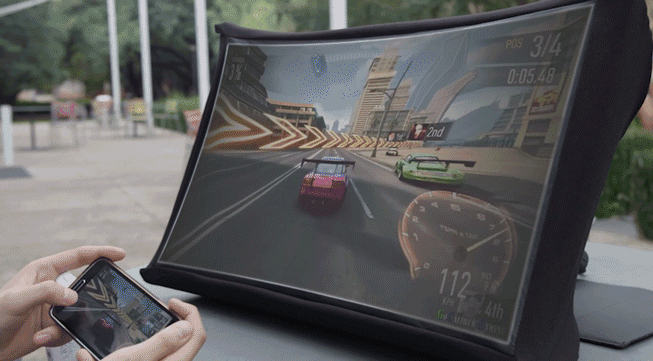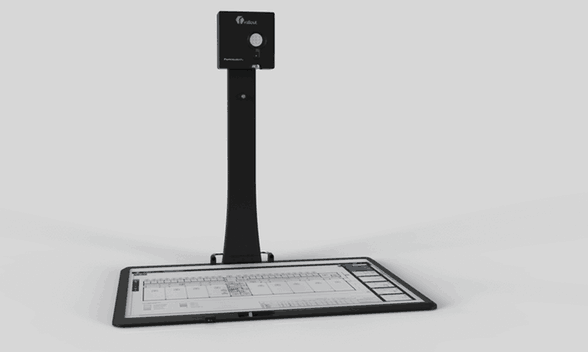Portable projectors can come in handy, but they typically require perfect lighting and a perfect wall to use them with, meaning they cannot be used anywhere. They also tend to have relatively low brightness, resolution and battery life.
 But that’s not the case with the Spontaneous Pop-up Display (SPUD). It’s a high-resolution, projector-based display with a 24-inch screen that collapses and expands like an umbrella. Because of SPUD’s light weight (less than 2 pounds) and compact form factor, when collapsed, it easily fits in the user’s purse, backpack, laptop bag, or even their jacket pockets. Its patented projection screen doesn’t wrinkle when collapsed.
But that’s not the case with the Spontaneous Pop-up Display (SPUD). It’s a high-resolution, projector-based display with a 24-inch screen that collapses and expands like an umbrella. Because of SPUD’s light weight (less than 2 pounds) and compact form factor, when collapsed, it easily fits in the user’s purse, backpack, laptop bag, or even their jacket pockets. Its patented projection screen doesn’t wrinkle when collapsed.
SPUD can be connected to any device via HDMI or a separate adapter, and doesn’t use a light bulb/lamp in its projection system. The system instead uses three R/G/B LEDs as the light source, and they have a lifespan of about 50,000 hours, meaning one can use SPUD for 10 hours a day for well over 10 years before worrying about its lifespan, according to its makers.
SPUD ships in June at $499. But Kickstarter backers have been able to order one with a pledge starting at $349 for super early birds. Its makers hope to raise $33,000 by Dec. 16.
Multiple usage scenarios can be envisioned for SPUD, including for business presentations, for playing video games and while traveling. One additional big plus compared to typical portable projectors is that it uses a flexible polymer that can’t crack or chip and, if it gets dirty, SPUD is also washable.
On the other hand, despite its 1280 x 720 resolution being better than portable projectors like the 854 x 480 Asus S1, some consumers may be looking only for a device that supports 4K at this point. Its screen size is also likely too small for some consumers, but its maker is looking to offer larger display sizes in the future.



 The portable LED projector market continues to grow, with smart functionality among the features becoming especially popular.
The portable LED projector market continues to grow, with smart functionality among the features becoming especially popular. Pico projectors that can be connected to Android and iOS mobile devices to display video and other content can come in handy at home and at the office when making presentations. Combining a pico projector with an LED light bulb into a device that can be connected to any light socket could make it even more handy.
Pico projectors that can be connected to Android and iOS mobile devices to display video and other content can come in handy at home and at the office when making presentations. Combining a pico projector with an LED light bulb into a device that can be connected to any light socket could make it even more handy. That’s precisely what the makers of
That’s precisely what the makers of